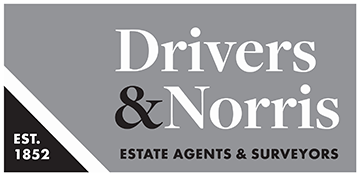Stamp Duty thresholds have fallen from today and have pushed the cost of moving a home up by 13%.
From today, first-time buyer Stamp Duty relief has dropped from £425,000 to £300,000 while home movers will pay from £125,000 instead of £250,000.
The latest Housing Market Affordability Review from Yopa suggests that England is by far the most expensive nation to move home, with the total average cost coming to £51,826.
This figure has increased by 10.9% over the last year alone and whilst the average mortgage deposit of 15% is the largest cost incurred at £43,585, the agent said it is the changes to Stamp Duty relief thresholds that have driven this increase in moving costs.
A year ago, the average home mover would have paid £1,433 in stamp duty. Prior to 1 April this year, this cost sat at £2,028, but with the Government failing to extend relief thresholds, the average cost of Stamp Duty now sits at £4,528 – a 216% increase versus last year.
Conveyancing costs have increased by 12.5% annually, now averaging £1,364, with the average mortgage payment of £1,432 up 3% annually, whilst removal costs have increased by 1.3% to £917 on average.
At a total of £34,429, home movers in Wales face the second largest cost when moving home, with the cost of conveyancing (£1,228) the highest cost incurred after placing a mortgage deposit.
Conveyancing costs have also seen the largest increase across Wales at 9.5%, however, the nation has seen the smallest overall increase in the cost of moving of all UK nations at just 3.2%.
Scotland’s version of Stamp Duty, or LBTT, is the moving cost that has seen the largest increase year on year, largely due to increasing house prices, up by 39%, with the average cost of removals also up 14.1%, although again, it’s conveyancing that costs Scottish homemovers the most after a mortgage deposit at an average of £1,163.
All in all, the average initial cost of moving home across Scotland now sits at £32,172, having climbed by 7.8%.
And whilst Northern Ireland is home to the lowest overall cost of moving at £31,353, this cost has increased by 13.2% over the last year – the largest overall increase of all UK nations.
Verona Frankish, chief executive of Yopa, said: “Homeownership doesn’t come cheap and house prices are the key factor behind the high cost of purchasing a home, with the value of bricks and mortar largely trending upwards over the last 30 years.
“Of course, a mortgage deposit alone isn’t enough to secure a property and there are a raft of additional costs that homemovers need to factor in when entering the market, such as Stamp Duty, conveyancing costs, mortgage repayments and even removals.
“The bad news is that, like house prices, these costs have increased pretty much across the board and total as much as £52,000 depending on which UK nation you’re looking to make your move within.”
Commenting on the Stamp Duty changes, Toby Leek, president of NAEA Propertymark, said: “Moving forward, however, the extra cost may be adsorbed within the price of properties therefore raising the overall price marginally but remaining within affordable limits for many people especially given mortgage products coming to the market continue to improve, with sub 4% products now available.
“As this improves this will hopefully continue to enable people to step onto the ladder for the first time or move home more freely as we move into the summer months, which is a traditionally busier time for the housing market and presents buyers and sellers with much more options.
“For some though, home ownership aspirations are unrealistic and the growth in the amount of a deposit needed which is, on average, around £50,000 is too far out of reach.
“Therefore, the UK Government needs to urgently review the Stamp Duty value bands to reflect average property prices and ensure any current or future measures to help first time buyers including saving ISAs are available, fit for purpose and consider house price inflation.”
